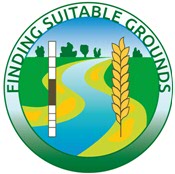Finding Suitable Grounds

Finding Suitable Grounds is a 5-year project funded by the Dutch Research Council (NWO), based at the University of Groningen and Utrecht University, in collaboration with Universitat Pompeu Fabra, RAAP, BIAX, Cultural Heritage Agency of the Netherlands and the Free University of Brussels. The project studies the setting and speed of adoption of crop cultivation in the lowlands of the Netherlands, since the onset of the Neolithic (6000-4000 BC).
The introduction of farming was a major development in the history of human society , abandoning the hunter-gatherer mobile life styles for more settled ones . Discussions on the mode and speed of this change have been a major topic among archaeologists and anthropologists. The ‘neolithization debate ’ between those who advocate a quick adoption, and those who regard the process as one of gradual inclusion is still not resolved. Buried and submerged landscapes in the lowlands of the Netherlands play a key role in this debate. The exceptional conservation of the natural surfaces of the “neolithization window”, provides unequalled opportunity for geoarchaeological and palaeobotanical study of the agricultural transition. I n our project, we will investigate in detail how , where and when humans in the Dutch lowlands first managed to clear suitable grounds and started crop cultivation. Focus is on two research areas: 1) the Flevoland area (the Swifterbant culture type region) and 2) the central Rhine-Meuse delta, where a fluvial levee landscape forms the transition between the upstream areas which were first cultivated by the people of the Linear Pottery Culture (LBK), and the downstream river dunes and beach ridges.
W e will use newly collected and digitally archived (legacy) sedimentary, palynological and archaeological surveying data as well as innovative palaeogeographical exploration techniques to identify and target the most suitable areas for crop cultivation . On the new samples from mechanically extracted cored we will use an approach that combines soil micromorphology, 14C dating and multi-proxy palaeobotanical analyses . These will reveal how the landscape and the diverse ecological niches were used by hunter-gatherers and how this use would have changed due to the adoption of crop cultivation in the period 6000-4000 BC .
| Last modified: | 12 January 2022 11.35 a.m. |
